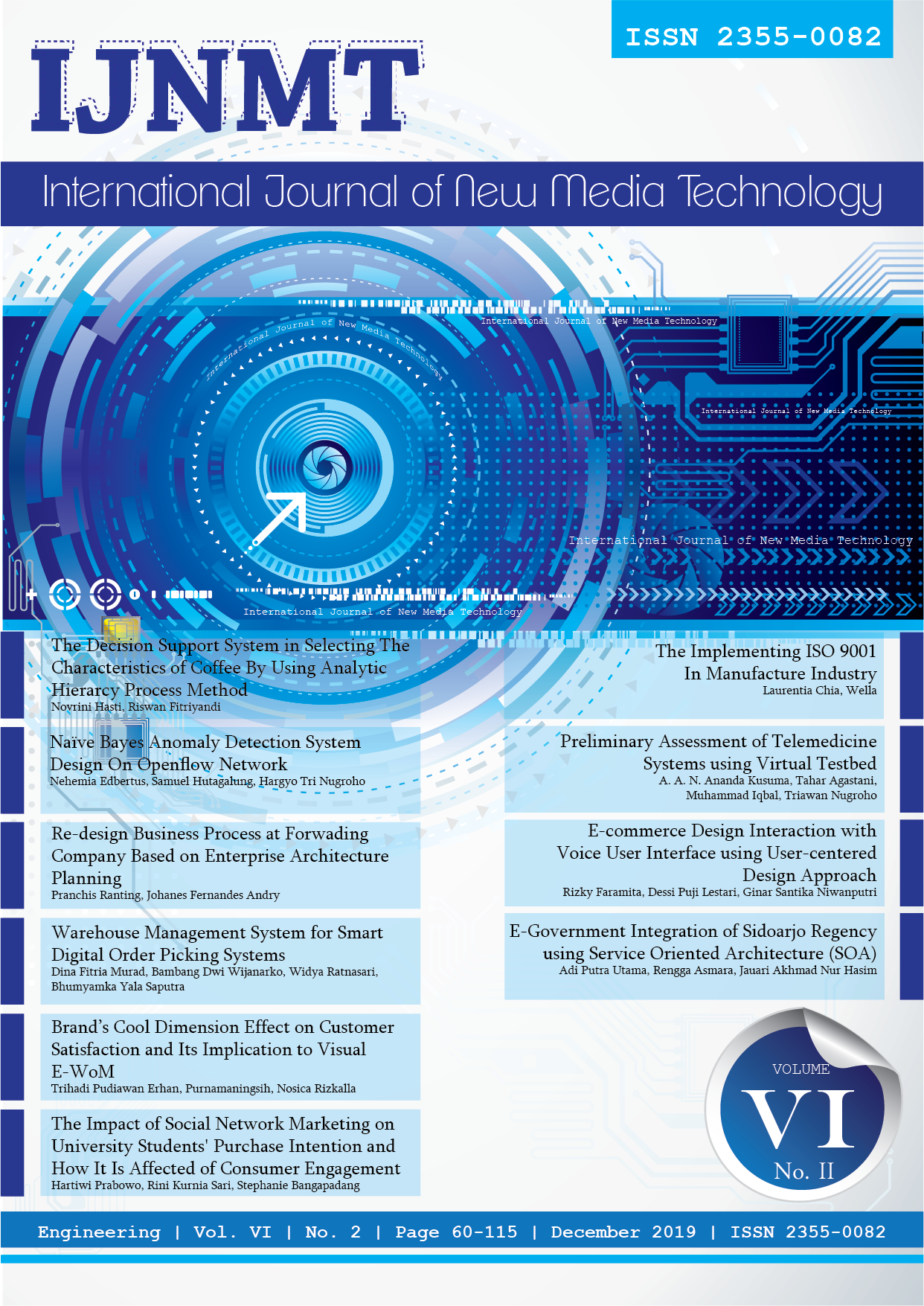Naí¯ve Bayes Anomaly Detection System Design On Openflow Network
DOI:
https://doi.org/10.31937/ijnmt.v6i2.1186Abstract
One of the generally launched attacks is Distributed Denial of Service that renders its target unable to provide its service. Gaussian Naí¯ve Bayes Classifier is one out of several techniques used in detecting those attacks by classifying network traffic in a window as an attack or a normal traffic based on normal distribution previously calculated from normal and attack traffic datasets. This research focuses on mitigating SYN Flood Type DDoS attacks on OpenFlow Network using Zodiac FX as a switch. The developed system utilizes OpenFlow Protocol to apply flow rule in switch's flow table in order to detect and mitigate SYN Flood attacks in real-time. Applied mitigation procedure is to divert incoming packets into SYN Proxy so that only legitimate TCP packets are able to reach the server. The results show that the system has a bandwidth of up to 60Mbps under normal condition and 5,03Mbps under attack. Maximum malicious packets that could reach server before it is diverted to SYN Proxy is estimated to be 400 packets and not affected by the number of attacks, assuming that the flow rule sent by the controller are enacted immediately.
Downloads
Downloads
Published
How to Cite
Issue
Section
License
Authors retain copyright and grant the journal right of first publication with the work simultaneously licensed under a Creative Commons Attribution-ShareAlike International License (CC-BY-SA 4.0) that allows others to share the work with an acknowledgement of the work's authorship and initial publication in this journal.
Authors are able to enter into separate, additional contractual arrangements for the non-exclusive distribution of the journal's published version of the work (e.g., post it to an institutional repository or publish it in a book), with an acknowledgement of its initial publication in this journal.
Copyright without Restrictions
The journal allows the author(s) to hold the copyright without restrictions and will retain publishing rights without restrictions.
The submitted papers are assumed to contain no proprietary material unprotected by patent or patent application; responsibility for technical content and for protection of proprietary material rests solely with the author(s) and their organizations and is not the responsibility of the IJNMT or its Editorial Staff. The main (first/corresponding) author is responsible for ensuring that the article has been seen and approved by all the other authors. It is the responsibility of the author to obtain all necessary copyright release permissions for the use of any copyrighted materials in the manuscript prior to the submission.















